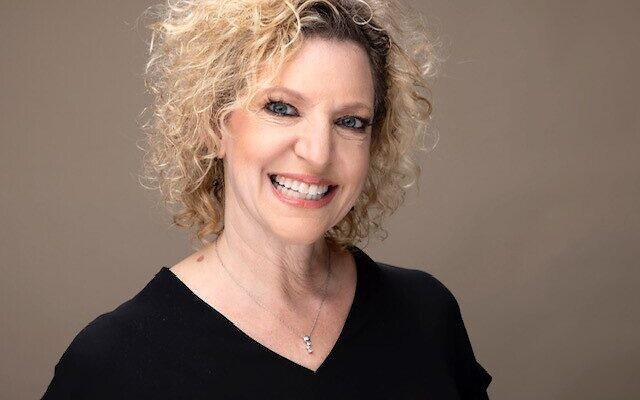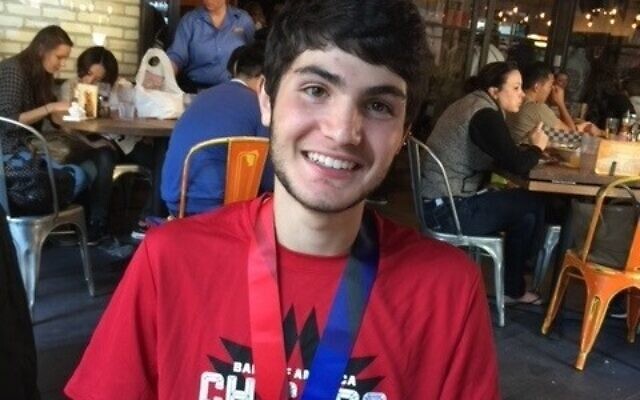Eating Disorders Among Males on the Rise
Expert Marci Soran discusses her son’s experience and how her organization, EDIN, provides invaluable support.
After 37 years with the Atlanta Journal-Constitution and now with the AJT, , Jaffe’s focus is lifestyle, art, dining, fashion, and community events with emphasis on Jewish movers and shakers.
Marci Soran turned her son’s struggle with anorexia into a healing process, as well as a successful career helping others avoid the same ordeal. As executive director of EDIN, Education and Insight, she provides schools with resources that emphasize body positivity and mental wellness alongside early detection for teaching professionals and parents.
Anorexia is on the upswing, especially among image-conscious young males, many of whom have been taught that it’s a “female disease.” But, according to one study, males represent 25 percent of anorexia nervosa cases and are at a higher risk of dying, in part because of a late diagnosis, since many assume males don’t have eating disorders.
“A quick flip through a fashion magazine and social media reveals super-thin figures that society promotes as beautiful despite being unattainable by most,” Soran says. “While many can relate to worrying about their weight or having trouble with their own body image, the most affected groups are often young women and, more recently, young men.”

An eating disorder is a serious illness characterized by distress regarding weight or body shape, as well as irregular eating habits. Common types of eating disorders include anorexia, bulimia, laxative abuse, purging, fasting and binge eating. Soran noted that the recent COVID-19 pandemic has also played a role.
“Eating disorders thrive in isolation. Since the onset of the pandemic, the rates have increased by 70+ percent. This is a crisis, and someone dies of an eating disorder every 52 minutes in the United States. Oftentimes it is unseen, as many physicians may not know what to recognize as symptoms,” Soran explained.
Her own journey began with her son Benny’s jogging. An overachiever and A-student who was competitive and focused, he started running with his brother. By 17, he wasn’t interested in hanging out with friends; his focus was on training to run his second Chicago Marathon, Soran says.
“He started dropping weight, running more, training for the LA Marathon and others. At his checkup junior year, the doctor was not concerned when he noticed Benny’s slow heart rate. The night before a race, Benny was very upset and anxious, yet he still finished in the top 2,000 of the 42,000 runners. Benny came to my husband and me thinking he had a problem. We decided to consult with a psychologist who asked if we had heard of orthorexia, a focus on eating ‘perfectly’ or ‘clean,’ which is increasing.”

At high risk are males who are athletes competing in sports that tend to emphasize diet, appearance, size and weight. According to one study, among athletes who compete in weight-class sports such as wrestling, rowing or horseracing and aesthetic sports such as bodybuilding, gymnastics, swimming and diving, some 33 percent of male athletes are affected.
Among female athletes in weight-class and aesthetic sports, disordered eating occurs at estimates of up to 62 percent.
The Sorans found a treatment team composed of a dietician, psychologist and therapist.
“Benny really wanted to get better and was fully invested in his recovery,” Soran recalled. “He missed a good deal of his senior year of high school focusing on recovery. His wanting to get better, family support and the team were the reasons for a positive path forward. Benny did the work, and as a family, we did too. He learned how to cope and is doing great today. Of course, with mental health, it affects people in ebbs and flows.
“Benny has learned how to manage and, five years later, Benny knows himself well and revealed that he never even liked running. Today, Benny is 23 and completed his second year at the University of Cambridge in England, enjoys yoga and walking as his primary forms of exercise. … Recovery is not linear, and they may go forward and backwards.”

These days, Soran concentrates on education and outreach. EDIN, which works with The Davis Academy, The Epstein School, The Weber School, MJCCA and many more, has pivoted from primary in-school talks to include online solutions for school staff.
The organization is unveiling two new courses: one course, developed by Page Love of Nutri-Fit sports in conjunction with the Emory Rollins School of Public Health, certifies high school coaches in identifying eating disorders and provides tools for next steps.
Another, the Be Real/EDIN education course for teachers, counselors and school staff, was delivered more than 80 times last year through partner Be Real and will give continuing education credits for participation.
EDIN remains close to its original goal of speaking to anyone who needs help, from younger kids to middle schoolers and older women, who may be struggling to accept their bodies.
- Health and Wellness
- Local
- Marcia Caller Jaffe
- Marci Soran
- eating disorders
- anorexia
- EDIN
- Education and Insight
- body positivity
- mental wellness
- bulimia
- laxative abuse
- purging
- Fasting
- binge eating
- COVID-19
- pandemic
- COVID
- Chicago Marathon
- LA Marathon
- orthorexia
- bodybuilding
- gymnastics
- swimming and diving
- Wrestling
- rowing
- horseracing
- University of Cambridge
- The Davis Academy
- The Epstein School
- The Weber School
- MJCCA
- Marcus Jewish Community Center
- Page Love
- Nutri-Fit
- Emory Rollins School of Public Health
- BeReal




comments